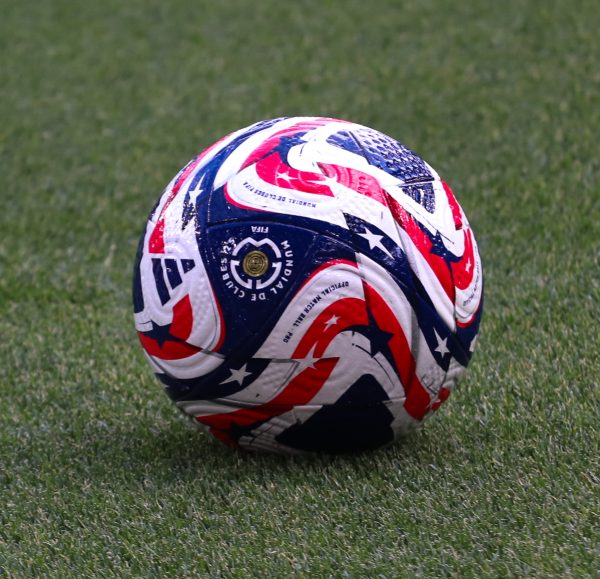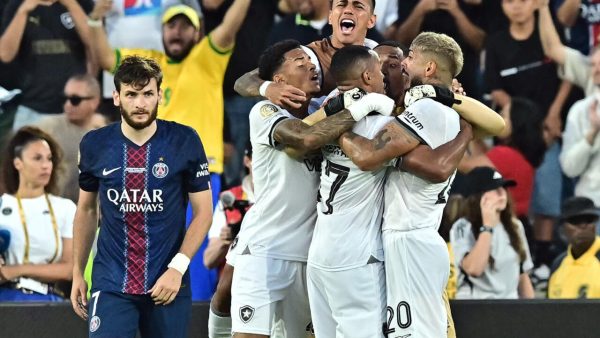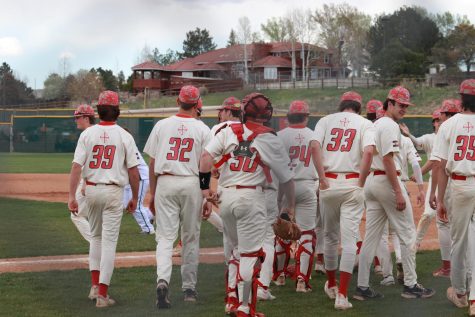More Than a Bump: The Untold Story of Concussions
Think of the brain as a gelatin, protected by fluid and a thick skull. Normally, the brain is protected from most forces, but if there is a strong force to the head (such as a tackle in football or taking an elbow to the head),the brain can go back and forth inside the head. This is known as a concussion.
Bre Purdue, the athletic trainer in the Boys Division, said, “Essentially, it is like a bruise to your brain when your brain hits your skull. There’s two types: one where it hits on the right side and one where it goes forward and backward.”
Football has the highest concussion rate of high school sports. According to an NFL funded study, high school football players are twice as likely to obtain concussions than college players. Seniors Blake Maher and Thomas Donnegan are two athletes that received concussions from sporting events.
Blake Maher was a right tackle in football before he had his second concussion.
“The first was when I fell on a snowboard. I hit some ice, the board slipped out from under me, and I hit my head. I was wearing a helmet, but I still got a concussion,” Maher said.
However, he recovered completely in a week. His life was back to normal, at least temporarily. That changed during a high school football game.
“I made a cut block (hit at the knees) on a bigger defensive lineman, and I didn’t get my hand up fast enough so I went head first into his knee,” Maher said.
Maher was immediately pulled from the play and observed for 24 hours to check if he had a concussion. School policy states that a concussion has to be monitored to determine the appropriate course of action.
“Generally, if there is even a question that a student may have a concussion, we pull them and we monitor their symptoms for 24 hours before we refer them, to make sure that things are okay,” Purdue said.
When the athletic trainers believed Maher has sustained a concussion, they referred him to a doctor.
“I was also diagnosed with serious muscle injuries in my neck during this period, and these problems have worked their way down into my back,” Maher said.
For six weeks, Maher was in and out of school, where he slowly got back into normal academic life.
“Most of my teachers were helpful. I made up my tests and projects in December of freshman year and by second semester it was like I hadn’t missed any work,” Maher said.
After three months, he was cleared by his doctor to play again, but his arduous recovery process dissuaded him. It was not a decision that he took lightly. “I have really missed playing football, but I don’t doubt my decision to quit,” Maher said.
Unfortunately, Maher is not the only Regis Jesuit student who has left football due to a concussion.
Senior Thomas Donnegan also had the misfortune of receiving five concussions throughout his eighteen years. His first concussion came from a kindergarten dodgeball game. He dove headfirst for a ball and slammed into the bleachers.
“My second one I got my sophomore year of high school playing football, and I don’t remember anything that happened,” Donnegan said.
Donnegan’s football career ended after another serious concussion on the field. “I’m done with all contact sports for the rest of my life,” Donnegan said.
Throughout his many concussions, he also experienced headaches, that manifested in a variety of locations throughout his head. Donnegan is light and sound sensitive.
“Anything that is really loud or bright absolutely kills my head,” Donnegan said.
His memory is not quite what it used to be. Academically, this has been a challenge, but Donnegan has learned to make adjustments. He relies on visualization, as he can remember better if he visualizes images or talks through information.
“Rather than trying to read something on a piece of paper, I usually try to draw it out or talk it out,” Donnegan said.
This is the reality of such head injuries. These injuries affect football, and every sport.
Donnegan wished that he would have had a baseline test.
“It’s the test that you can take prior to having a concussion, and then if you get a concussion, there is something to compare. It tests your reflexes, your memory skills, like visual and focal exercises,” Donnegan said.
There seems to be a geographical correlation with concussions. In a recent story by the Denver Post on December 9, 2013, it cites a study from the Colorado School of Public Health that shows research linking high altitude and a reduced incidence of concussions in high school students.
There is a thirty-one percent decrease in concussions in student athletes at altitude than students at sea level; a significant number that warrants further research. Initial research indicates that the brain fits more tightly in the skull at higher altitude. This physiological change is attributed to blood vessels that undergo mild swelling at high altitude.
There have been fatalities due to concussions. If an athlete obtains a concussion, but goes back to sports before the injury heals, he is at risk for Second Impact Syndrome, which is defined by the National Institute of Health as getting a concussion while recovering from a concussion. These syndromes are known to cause death, especially among high school athletes.
One famous instance was Jake Snakenberg, who was 15 years old when he died of Second Impact Syndrome. He was playing in a Grandview football game when he collapsed after being in a huddle. His death and the research that further explained the danger of concussions prompted the state to enact the Jake Snakenberg Concussion Act of 2011.
The law helped coaches receive education about concussion. The law also stated that a student athlete must be removed from the field of play if a concussion is suspected, and that the student must be signed off by a healthcare professional before returning to play.
Concussions are also present among the NFL players. Seventy-five former players are suing the NFL for hiding the facts about the effects of concussions, from as early as 1920. A federal judge settled the case with a $765 million settlement for brain-related injuries and by agreeing to pay for medical exams and treatment.
Donnegan was very pleased to see that players get compensated but wants the NFL to go further.
“I definitely think that the NFL has not done enough with protecting the players. Honestly they need to require football players to wear mouthpieces–they don’t do that currently–and honestly, they say that 95% of all concussions could be stopped by wearing a mouthpiece, because it decreases the shock actually through your skull just by wearing a mouth piece. I think the NFL needs to talk more with players about that and take the precautionary measures they are not taking,” Donnegan said.
Despite the obvious risks, both Maher and Donnegan do not have any regrets about playing football.
“I don’t have any regrets, I’ve always pushed myself really hard in everything I’ve done. There is nothing I would change, I loved playing. I wish I could still play,” Donnegan said.







